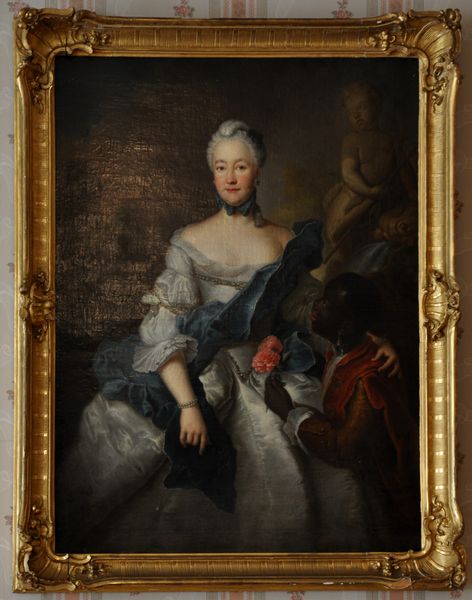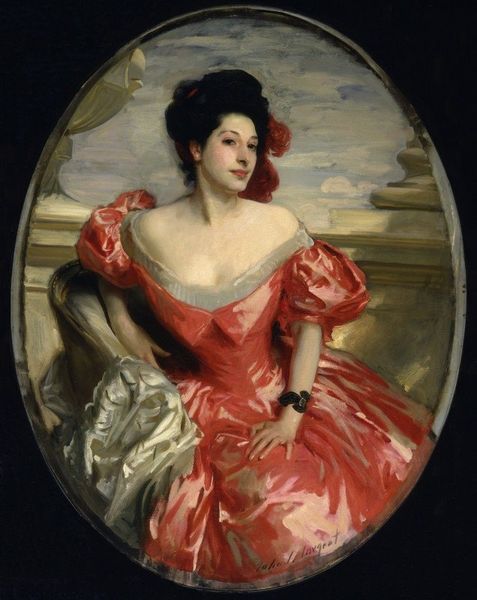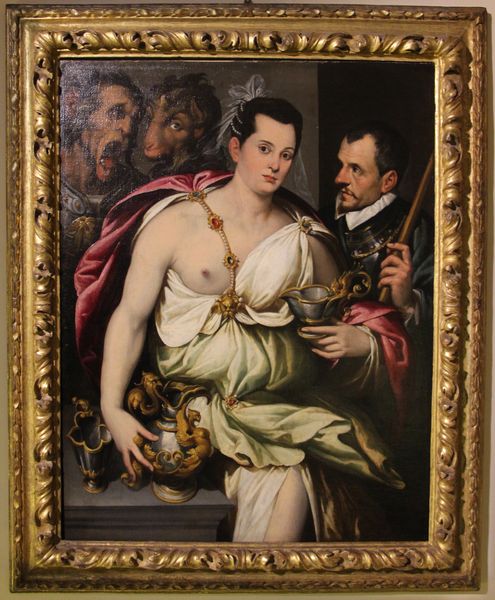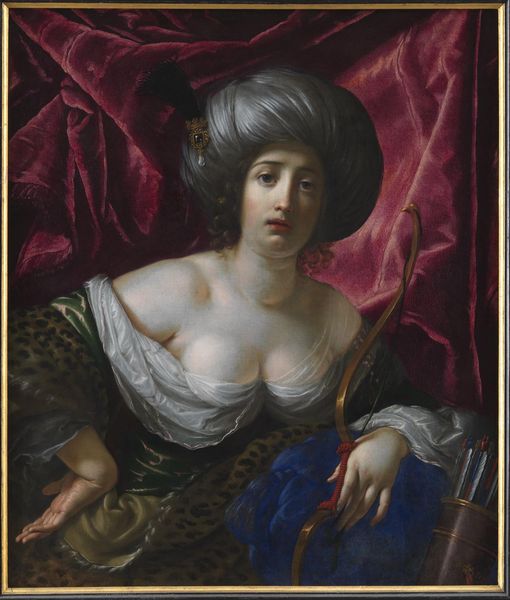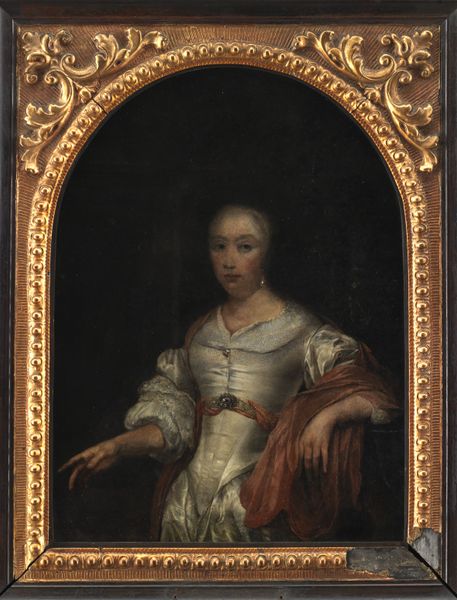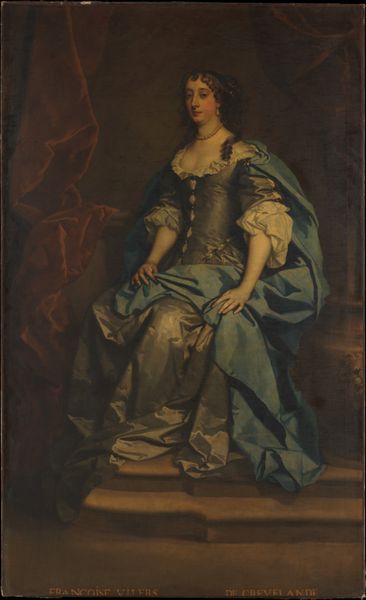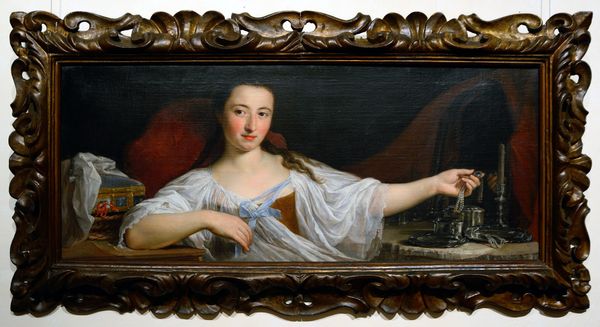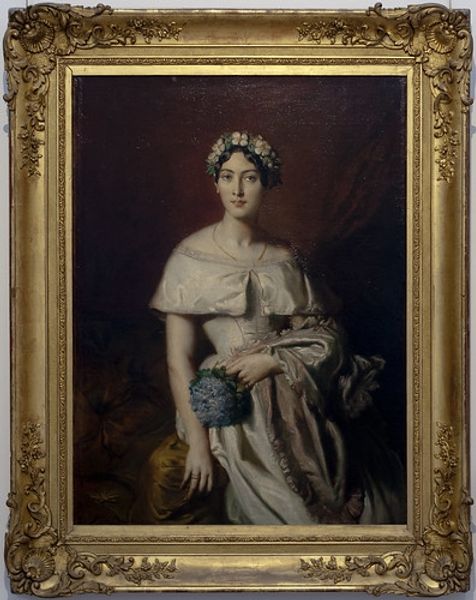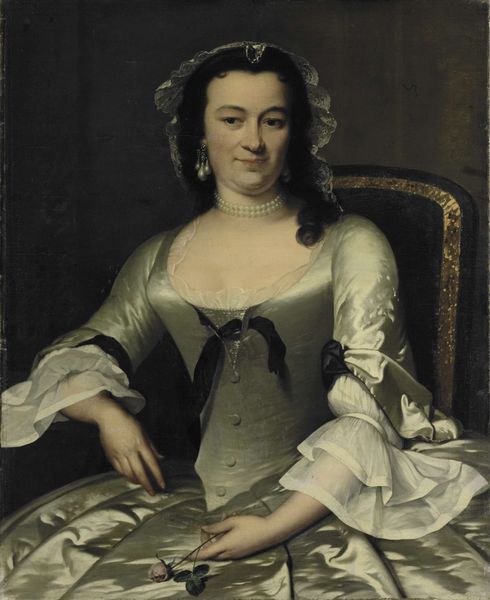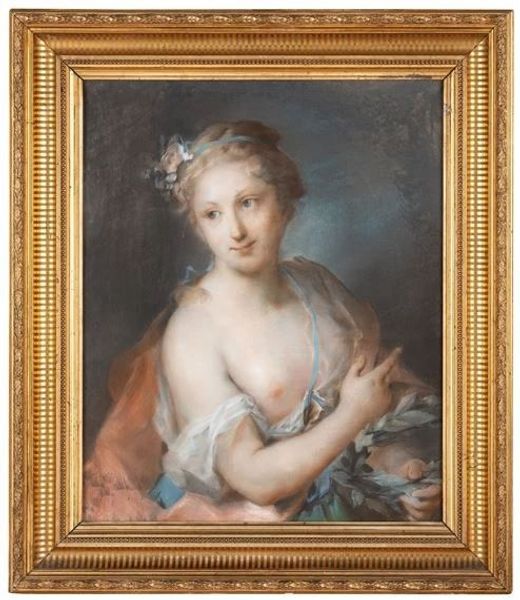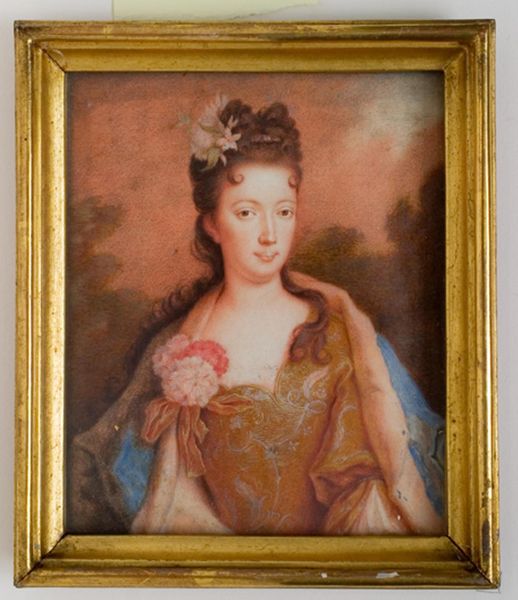
painting, oil-paint
#
portrait
#
baroque
#
painting
#
oil-paint
#
history-painting
Copyright: Public domain
Curator: Here we have a compelling portrait: Giovanni Battista Gaulli's depiction of Giulia Massimo as Cleopatra, rendered in oil paint. It’s a striking example of Baroque portraiture. Editor: Immediately, I'm struck by her gaze. She looks... resigned? Almost as if she's already accepted her fate, but there's still a glimmer of defiance in her eyes. The shadows around her face definitely contribute to that somber mood. Curator: Indeed. Gaulli is deliberately placing Giulia within a complex historical framework. This work prompts us to consider the intersections of power, gender, and representation through the ages, with a potent commentary on femininity in 17th century Europe. Editor: And she’s holding what I assume is the asp? That little bowl looks incredibly delicate against the heaviness of her fur stole and that intense red velvet drape in the background. The staging almost feels theatrical, don't you think? A quiet drama. Curator: It certainly emphasizes the constructed nature of identity and the performative aspect of portraiture, especially how women navigated highly prescribed societal roles. By casting Giulia Massimo as Cleopatra, Gaulli subtly critiques the limitations placed upon women of influence. She is both a powerful queen and a woman confined by destiny, just like Giulia. Editor: It makes you wonder about Giulia Massimo, the sitter. Was she complicit in this narrative, or was it purely Gaulli’s interpretation? What did she think about being painted as Cleopatra? Her expression does suggest a story… Maybe not a happy one, though! Curator: Precisely! And that’s why art history, coupled with insights from feminist theory and sociology, encourages deeper inquiry into the artist’s choices and the socio-political landscape influencing artistic creation, shedding light on female agency within hierarchical constructs. Editor: This piece has this ability to just get your mind racing in so many directions... it’s almost haunting! Now I want to dive deep into all of the old gossip from that time, and see how much of Gaulli’s intent bleeds into the painting itself. Curator: Exactly. The beauty of historical context in understanding a work of art is that it ignites this deeper questioning and expands our awareness, so even through an older lens, the dialogue between us and the artwork continues, regardless of the period or subject.
Comments
No comments
Be the first to comment and join the conversation on the ultimate creative platform.

